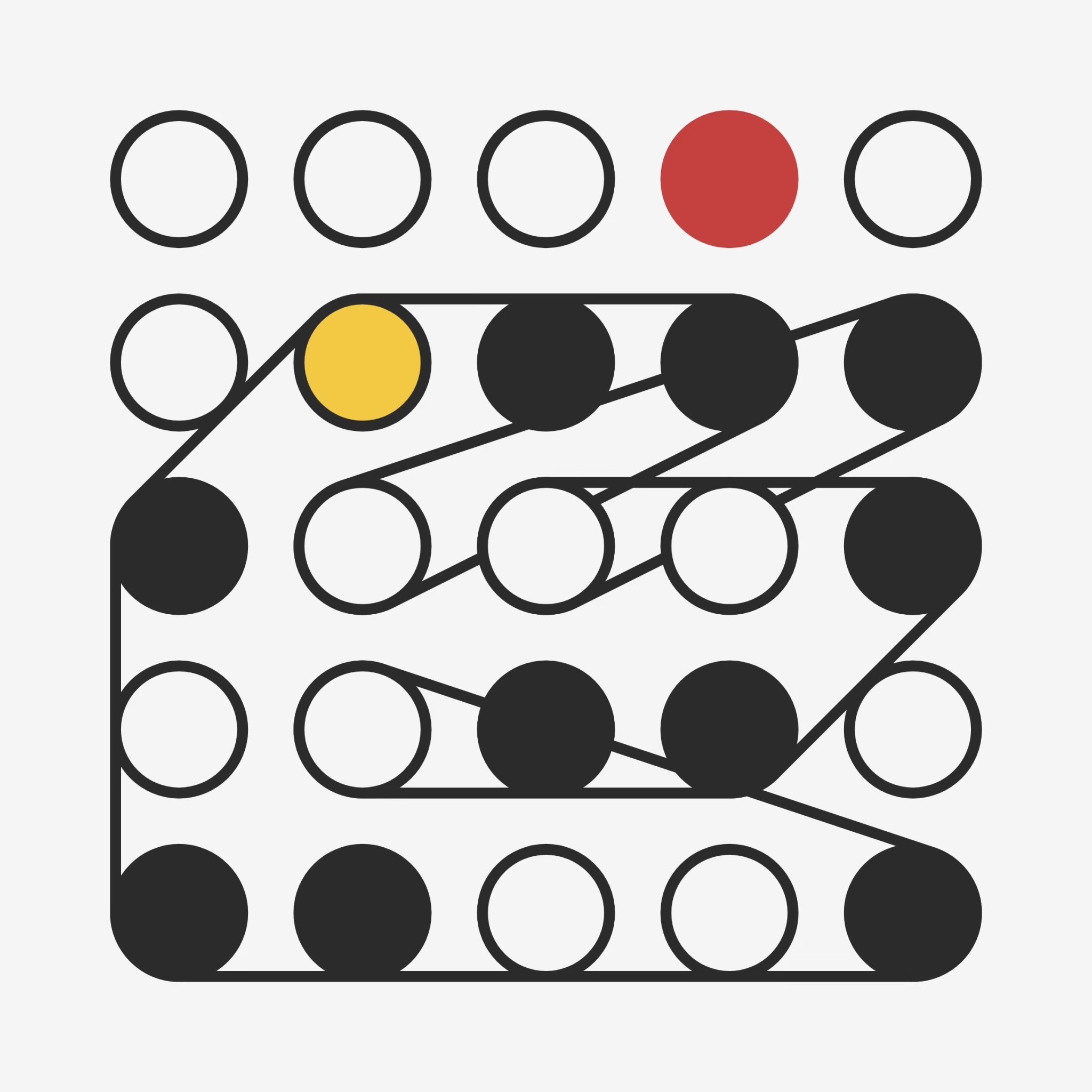How to Make Generative Art
Creating generative art involves using algorithms, code, or processes to generate visual or multimedia artworks. By harnessing the power of algorithms, the artist, or the creative coder, creates unique artwork that evolve and self-generate based on given set of rules.
Here's a step-by-step guide to help you start making generative art.
Generative Art: Chromie Squiggles, 2020 by Snowfro
Step 1: Understand Generative Art
Before diving in, familiarize yourself with the concept of generative art. Here’s an introduction to generative art with its origins and trends. Research various artists who work in this field, explore different styles and techniques, and gain a deeper understanding of the creative possibilities. Here’s a list of 10 talented digital artists who create wonderful generative art for your inspiration.
Step 2: Choose a Medium and Tool
Then, decide on the medium you want to work with: digital images and/or animations — choose the appropriate tools and software for your chosen medium.
Popular choices include:
Visual Generative Art: Processing, openFrameworks, p5.js, Nannou, TouchDesigner.
3D Generative Art: Blender with Python scripting, Unity with C# scripting.
Step 3: Learn Programming Basics (if needed)
If you're new to programming, take some time to learn the basics. For visual and interactive generative art, knowledge of programming languages like JavaScript, Python, or C++ can be extremely helpful.
Step 4: Study Basic Art Principles
Even though generative art often involves algorithms, understanding fundamental art principles like color theory, composition, and aesthetics is crucial for creating visually appealing and meaningful artworks. Here’s an introduction to generative art, its origins, and notable generative NFT projects.
Generative Art: Centrifugal by Marcelo Soria Rodríguez
Step 5: Experiment with Code and Algorithms
Start experimenting with simple code snippets or algorithms to generate basic shapes, patterns, or sounds. Modify existing code examples from tutorials or create your own. Gradually add complexity to your creations as you become more comfortable with the programming environment.
Step 6: Combine Techniques and Elements
Combine various generative techniques to create unique and interesting artworks. Experiment with fractals, cellular automata, noise functions, particle systems, randomization, and more. Blend different elements such as shapes, colors, textures, and motions to develop your artistic style.
Step 7: Iterate and Refine
Generative art is about iteration. Refine your algorithms, adjust parameters, and fine-tune your code to achieve the desired visual or auditory outcome. Embrace trial and error as an essential part of the creative process.
Step 8: Embrace Randomness and Constraints
Generative art often involves an element of randomness. Embrace randomness to introduce unpredictability and surprise into your creations. You can also work within certain constraints or rules to guide the generative process.
Step 9: Document Your Process
Keep track of your progress, code snippets, and design decisions. Documenting your process will not only help you remember your steps but can also serve as a valuable resource for others interested in generative art.
Step 10: Share and Exhibit Your Artwork
Once you've created generative artworks that you're proud of, share them with the world! You can showcase your art on social media platforms, personal websites, or art galleries. Engage with the generative art community to gather feedback and inspiration. Submit your art to Digital Arts Blog for a chance to be featured!
Generative Art: Fidenza, 2021 by Tyler Hobbs
Step 11: Keep Learning and Experimenting
Generative art is a dynamic field that continuously evolves. Stay curious, explore new algorithms and techniques, learn from other artists, and continue experimenting to push the boundaries of your creative practice.
Remember, generative art is as much about the process as it is about the final result. Enjoy the journey of exploring the intersection between creativity, programming, and technology.
How to make generative art NFTs
The Ethereum-based NFT platform Art Blocks has established itself as the go-to platform for generative art. They focuse on “genuinely programmable on-demand generative content,” as noted on their website. The artists can use creative code to generate varied artworks directly on the blockchain, and Art Blocks mints a unique artwork based on the artist’s algorithm upon purchase.
Alternatively, the Tezos-based NFT marketplace fxhash is another platform to create and collect generative art.
What is the best programming language for generative art?
Pretty much any programming language can be used to create generative art! The most popular softwares and tools include:
Generative Art: Ringers, 2021 by Dmitri Cherniak
Is generative art the same as AI art?
Not quite – AI-generated art is a subcategory of generative art. While generative art involves creating works through algorithmic processes, AI-generated art specifically leverages machine learning to produce art. This eliminates the need for artists to write code line by line, when they use AI-art generators like PicTools AI.
What makes good generative art?
Familiarize yourself with the most popular generative NFT projects to recognize what makes good generative art and how you can create one with your own spin. A few examples of generative art NFTs you should know are Tyler Hobbs’ Fidenza, Snowfro’s Chromie Squiggles, and Dmitri Cherniak’s Ringers — these projects are worth millions of dollars and hold crucial importance for the community.
How do I sell my generative art?
Generative art NFTs are highly popular, and the best path to selling your generative artwork may be minting it on Etherium based Art Blocks or Tezos based fxhash.
Once you've created generative artworks that you're proud of, share them with the world. You can showcase your art on social media platforms, personal websites, or art galleries. Engage with the generative art community to gather feedback and inspiration.
Can you make money with generative art?
Yes! You can turn your generative art to physical product designs – think custom keychains, apparel design, and other products.
Or, you can offer your generative art as NFTs – while the above-mentioned generative art NFT projects are worth millions of dollars, many artists make successful careers as creative coders. Here’s 10 of them for your inspiration.
Generative Art: Ateliers, 2023 by Sarah Ridgley



















